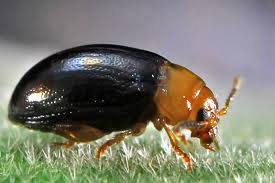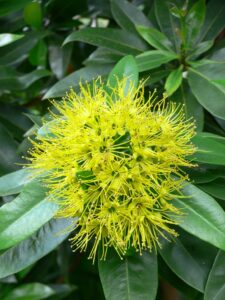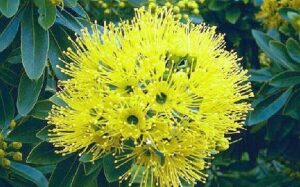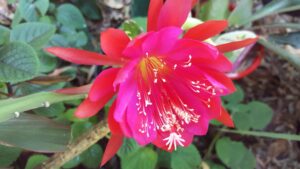Flea Beetles are 3-8mm in length and are often metallic in appearance with large rear legs. They feed on the leaves of hibiscus, dahlia and abutilon. Vegetables are not exempt from these critters – eggplant, potato, beans and brassicas are typical favourites.
They are so named because of their ability to jump like fleas when bothered.
Their eggs are laid at the base of plant stems in early summer after a feeding period, and larvae feed at the roots.
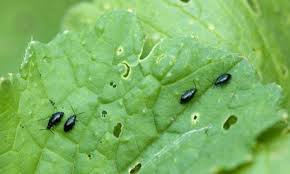
Adult beetles feed on foliage, producing shotholes in the leaves as seen in the image left.
Flea beetles vary from black to tan, solid or spotted depending on the species. Adtult flea beetles overwinter in undergrowth. They pose a threat early in the planting season as they are emerging, typically when the weather starts to warm up. Look for shot-holes in leaves, especially on young seedlings, where damage is most rapid and will cause the most harm. Flea beetles usually don’t cause fatal damage to established plants because the leaves are too large. The real danger is that they can spread bacterial diseases such as wilt and blight, from plant to plant.
Prevention – remove weeds. The larval stage feeds underground, so practise good crop rotation to break their life cycle.

